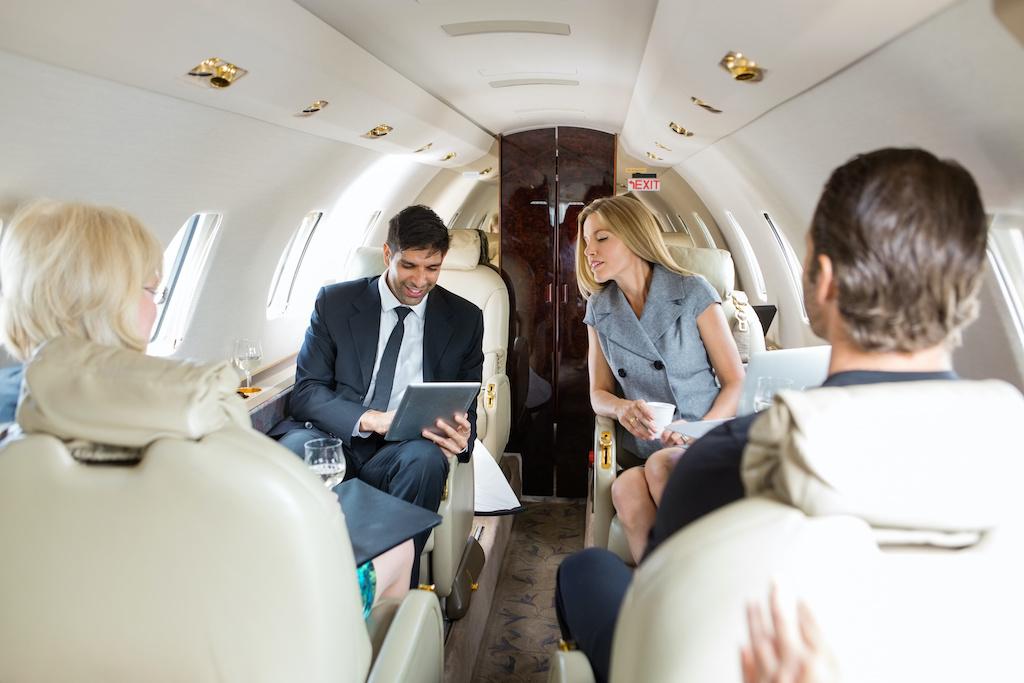Checklist: Jet Cards—The Devil’s in the Details

Buying products or services in bulk to earn a discounted price is hardly a new concept. Just think Costco or Sam’s Club. Decades ago, when that discount idea found its way to business aviation customers, they often bought a block of flight time that guaranteed a specific price per hour in a business jet. Of course, not every block of flight time looked and acted the same.
Around 2001, Kenny Ditcher, now CEO of Wheels Up, created the Marquis Private Jet Card, one of the first iterations of the jet card system. Through an alliance with NetJets, Marquis Card customers earned 25 hours of occupied use in a fractional business jet without any long-term commitment. The jet card also eliminated the most irksome aspect of one-way charter flying; the sizable fee to return an empty airplane to its home base. Digging deeply into the jet card contract also reveals that not all jet cards are created equal.
Doug Gollan, founder and editor-in-chief of Private Jet Card Comparisons (PJCC), told BCA that his newsletter’s database, “tracks over 40,000 data points so the customer can quickly compare more than 65 jet card variables.” He pointed out that customers simply want the best travel option to fit their needs but are often overwhelmed by the many variables and small print in contracts that often run 15-30 pages. “Some of our subscribers download our entire database and perform their own jet card qualifying searches. Others ask us to run the search for them.” PJCC is funded entirely by customer subscriptions and accepts no referral fees or advertising from jet card providers.
Here are questions Gollan says customers should consider before they make that first call to a jet card seller.
Where to?
Create a list of at least the top five destinations to which you and your associates or family might often visit. That will help focus your purchase on the right card. Some jet card programs focus on North America while others are global in scope. Not all plans offer national coverage, nor do some offer travel to Canada, Mexico, or the Caribbean.
How Often?
Will your travel be mainly business or personal? If you’re only flying four or five times per year and remaining at the destination just a few hours at a time, standard chartering might be less costly. Many of Gollan’s subscribers purchase a jet card--sometimes multiple cards--for particular kinds of flying but also choose on-demand charter when it fits. He reminds users, “They’re not marrying a particular card.” As the end of their commitment approaches, they can switch to a different card.
How Many Passengers?
Some programs cater to specific aircraft categories--light, medium, super-midsize and heavy jets. Decide early on how many business associates or family members will often be included in the flights you foresee. If you plan to fly mostly with just one or two, a light or possibly a medium size cabin aircraft may be plenty. However, if some of your travel normally includes a larger party of 7-10 people, you’ll want to ensure the program you choose offers the opportunity to upgrade to larger aircraft to accommodate that crowd.
How Long Are Your Typical Trips?
Jet cards are a bit like taxis and charge per occupied flight hour. If many of your trips are less than two hours, for instance, don’t choose a card with a two-hour minimum. Be certain you understand the minimums attached to your card. If the flight is completed in an hour and twenty minutes, you’ll be charged for two anyway. And again, be certain you understand the confines of your card’s service area. If you make regular trips to Naples, Florida, from Teterboro Airport in New Jersey, and decide to detour to the Caribbean for example, you could get a nasty surprise when the invoice arrives, and you learn your guaranteed pricing rate didn’t apply to that Caribbean diversion.
How Quickly Will You Need the Airplane?
Call-out times--how much notice you’ll need to give the aircraft operator--have been climbing significantly in 2021 due to an increase in demand and a declining number of aircraft systemwide to serve that increasing customer base. “The average call time in my database has recently climbed from about 28 hours to 43 hours,” Gollan says. Some call-outs are much longer.
Peak Days
Much like the airlines, jet card providers change things up during peak periods of the year like the major religious holidays. “Some jet card programs list just 10 or 15 peak days, while some have as many as 100,” Gollan says. Some include peak day surcharges.” During their peak periods, “all jet card operators have the flexibility to alter pick up times plus or minus three hours and one by as many as six,” he says. If you want to leave Dallas at 4 p.m. on a peak day, understand your jet card operator could alter that and pick you up at 1 p.m. or as late as 7p.m.
The Fine Print
One of the primary reasons people are sometimes unhappy with the end results of a jet card purchase is their failure to read the fine print and often confusing text contained in that humongous contract, Gollan notes. While it details what the card company will do, it also lists what they won’t. For instance, winter travel often includes stops at airports above the Mason/Dixon line, so be prepared that not all cards include the cost of deicing the aircraft. The fine print might also restrict booking a trip for an unaccompanied minor and demand a flight attendant at an extra charge to complete the trip. Some cards also restrict the carrying of pets, crated or not.




